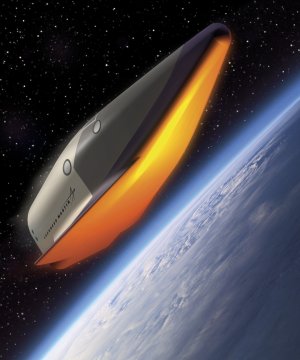Lockheed Martin has revealed its latest thinking on NASA's OrbitalSpace Plane (OSP) with the opening of a demonstration centre inWashingtonDC. Whereas Boeing is believed to have selected a ballistic capsule, the Lockheed Martin-led team has evolved a "lifting capsule" design (see image) that retains some of the aerodynamic capabilities of a lifting-body design.

The Lockheed Martin/Northrop Grumman/Orbital Sciences OSP team continues to perform trade studies to identify the optimum vehicle configuration, and plans to continue refining the concept until it submits its proposal for the programme in March next year. NASA intends to award a development and production contract to one contractor in August 2004.
A capsule is emerging as the simplest and safest means of returning International Space Station crews to Earth and meeting NASA's accelerated schedule calling for a crew rescue capability by 2008. While lifting bodies offer greater manoeuvrability and cross-range capability, the Space Shuttle Columbia accident in February raised questions about the safety of winged vehicles during re-entry. Lockheed Martin's concept retains some aerodynamic capability.
Boeing had narrowed its design options to a ballistic capsule and lifting body, and has made an internal decision on the preferred configuration, but has yet to reveal its choice. Sources say the company has opted for the capsule design, despite its work on the X-37 reusable spaceplane demonstrator for NASA. The winged X-37 is scheduled for atmospheric drop tests beginning in November 2004 and an orbital mission in 2006 that could last up to nine months.
Source: Flight International























